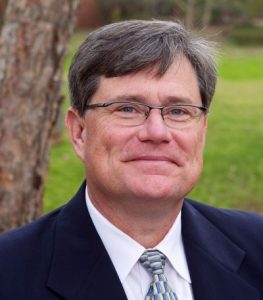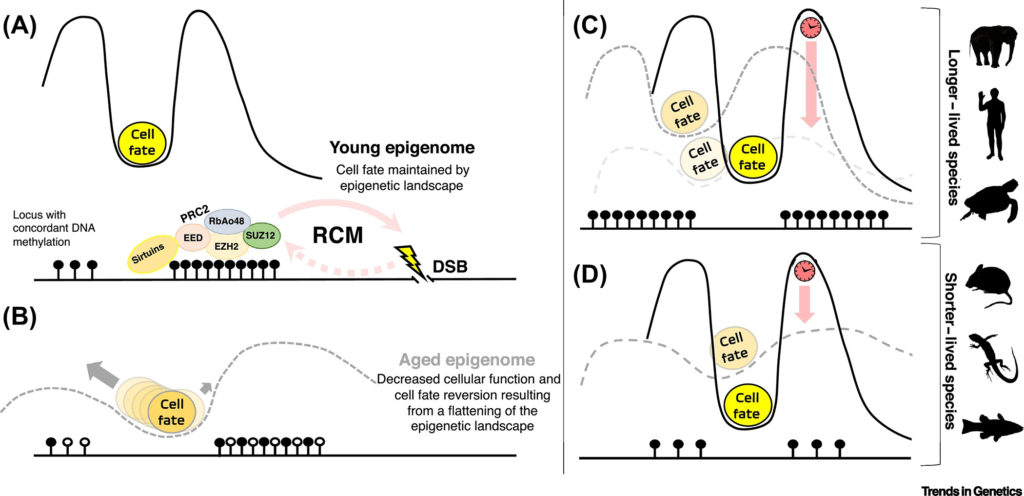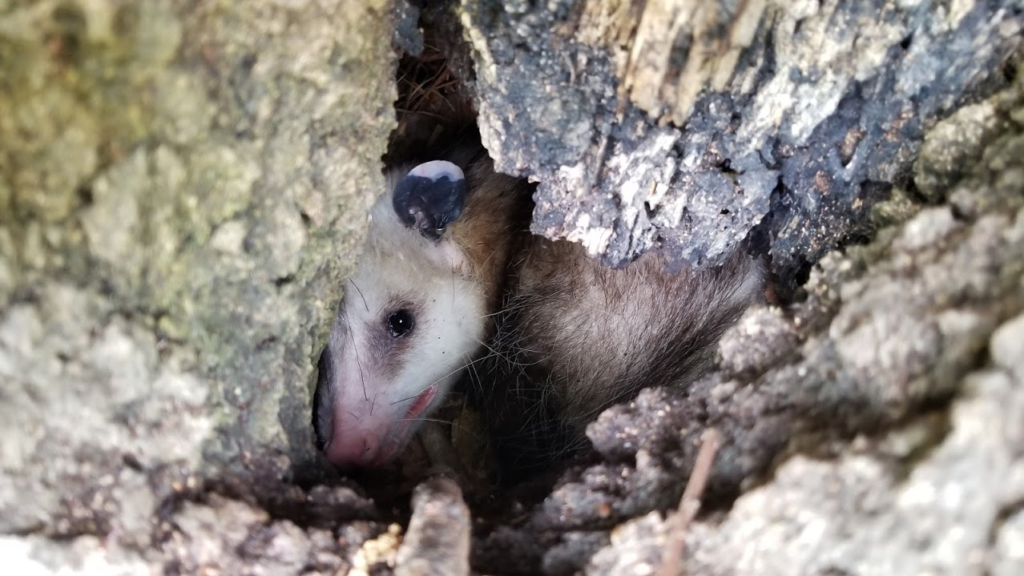Scientist advises caution before using advanced aquatic monitoring tool
During both 12-day trials, freshwater mussels were placed in the wetland with the DGTs to compare the performance of each in accumulating the metals.
During both 12-day trials, freshwater mussels were placed in the wetland with the DGTs to compare the performance of each in accumulating the metals.
The results verified Tuberville’s theory that annual survival increases with age.

Behind the myriad of global concerns currently at the forefront for mankind, lies the reality for scientists that radiological contaminants have increased globally. Stark evidence is provided by the abandoned cities forever changed in Chernobyl and Fukushima as a result of nuclear fallout and the billions of dollars spent on the cleanup of legacy waste from nuclear production sites.
A few years ago, 60 scientists convened at the University of Georgia’s Conference Center near Aiken to evaluate the need and rationale for reconnecting radiation protection programs with ecosystem science.
They represented the Association of Ecosystem Research Centers, the International Union of Radioecology, and staff from the UGA’s Savannah River Ecology Laboratory. Experts in their field, they brought two undeniable advantages to the discussion table—diversity and objectivity.
The group was composed of individuals from the United States, Russia, and Asia. Among them were statisticians, health physicists, ecotoxicologists, geneticists, and wildlife ecologists, as well as individuals trained in the fields of ecosystem science and radioecology.
For the first time, many of these individuals were asked to assess the field of radiation protection and if ecosystem science should be connected to radiological risk assessments.
The three-day symposium proved prolific, like the research conducted by the late Dr. Eugene Odum 70 years ago tracing radionuclides through ecosystems on the very same landscape.
It became exceedingly clear to these experts that radiation programs have lost the needed connection to the protection of natural ecosystems. Yet, the link between ecosystems and human health cannot be denied.
The 60-person group came to a consensus that it is vital to reconnect radiation protection programs to ecosystem science to facilitate the protection and monitoring of the plants, animals, and microbes that provide critical ecosystem services to humans and organisms. Services like clean air and water, the production of food and fiber, regulating climate and diseases, and nutrient cycling.
Ultimately, human protection depends upon protection of our environment. To miss this connection is to put the health of all humanity in danger and ecological education on weak footing. Decision makers must acknowledge this link and protect educational programs that produce future generations of scientists with proper training in nuclear science as well as ecology.
The scientists developed solid recommendations after addressing a series of questions, including: How can ecosystem science support ecological risk assessments?
Their recommendations are published in “Integration of ecosystem science into radioecology: A consensus perspective.” The study appears in this week’s edition of the highly reputable journal, Science of the Total Environment.
The following is a summary of the recommendations:
With this clarity of linkage and need, one might ask how did the study of radioecology lose its foundation or connection to ecology?
This occurred for numerous reasons, including the implementation of essential environmental protection regulations designed to protect ecosystems and a shift to programs primarily focused on human protection from direct exposure to or consumption of radioactive elements, known as radionuclides.
The transition mirrors our timeline through nuclear history. Understandably, like a train that changes tracks, we moved from Cold War concerns that began in the 1950s to dismay at the devastating human loss caused by the accidents in both Chernobyl in 1986 and Fukushima in 2011.
But we must move forward with a bird’s eye view and with gained insight from Odum, the father of modern ecology. Again, this exigency is upon us, as the use of nuclear materials has not ceased. Nuclear materials continue to be used around the world to produce energy, weapons, and fuel. We cannot afford missed opportunities and second guesses—the cost is too high.
It reads, “U.S. Government Property – Trespassers Subject to Prosecution.”
 UGA scientists have presented a strong case that the mechanism lies at the intersection of the genome and epigenome
UGA scientists have presented a strong case that the mechanism lies at the intersection of the genome and epigenome
What determines the life span of a mouse, alligator, dog or human? A team of scientists at the University of Georgia believes they have new insight into this age-old question.
Emily Bertucci and Benjamin B. Parrott, a research team at the Odum School of Ecology and the Savannah River Ecology Laboratory, have presented a strong case that the mechanism lies at the intersection of the genome and epigenome.
Bertucci, a doctoral candidate, and Parrott, an assistant professor, build on recently published data in epigenetics, which underlies changes in organisms caused by modifications to gene expression rather than alterations in genetic code. Their recent literature review, published in the journal Trends in Genetics, reports that a significant part of epigenetic aging occurs in regions with CpGs. A CpG is a region of DNA where the chemical elements cytosine and guanine are connected by a phosphate bond.
“CpGs are important because DNA methylation occurs in the area,” said Bertucci, the study’s lead author. “Methylation adds a chemical code to the DNA strand that empowers the strand and tells it how to function. It can also turn genes on or off.”
Scientists have observed that methylation patterns change as vertebrates age.
“We know that certain changes occur in the genome at certain times. These changes can be modeled to create epigenetic clocks and occur in the region associated with developmental genes,” he said. “You can take a blood sample to sequence DNA methylation and accurately predict age within several years.”
The activity that occurs in this area also determines a cell’s fate—whether it will be a skin cell, neuron or a heart cell—but this is just one piece of the puzzle.
Parrott said double-stranded breaks frequently occur in the genome throughout an organism’s life span. These breaks are efficiently repaired by proteins and enzymes known as chromatin modifiers.
According to the study, the chromatin modifiers leave the CpG Island to repair the breaks, and when they relocate, changes occur that alter gene expression and thus a cell’s fate.
If we think of these chromatin modifiers as soldiers, their role becomes quite clear, Bertucci said.
“They have unique power to support and enforce the code of the land, but if they leave the island to perform a rescue, the island becomes compromised and vulnerable if all of them don’t return.”
Scientists have known for years that species with longer life spans such as humans, alligators and elephants have higher levels of CpGs than species like fish and rodents, Parrott said. He likens increased CpGs on the island to a bright light beaconing from a lighthouse that aids the relocated chromatin modifiers or RCMs to make their way back home safely. They also act as a buffer to keep the foundation of the epigenetic landscape intact when the RCMs move to repair the double-stranded breaks.
The density of CpGs may not offer the total picture of life span, according to the researchers. Environmental factors and stress can also play a role.
The details of the study, including a list of the research the team reviewed, can be found at https://www.sciencedirect.com/science/article/pii/S0168952520301323
Soils with heavy metals had a higher level of specific bacterial hosts that were accompanied by antibiotic-resistant genes.

Since 2017, the wild lands of the Savannah River Site have served as a front line in the U.S. Department of Agriculture’s fight to eradicate rabies in the nation.
Researchers at the University of Georgia’s Savannah River Ecology Laboratory have been conducting studies focused on the elimination of rabies in raccoons in partnership with the National Rabies Management Program operated by USDA’s Animal Plant Health and Inspection Service. The research is intended to determine the most efficient method for vaccinating the raccoon population to support the goal of preventing the spread of wildlife rabies.
Olin “Gene” Rhodes, director of SREL and a wildlife ecologist, said the site’s 310-square-mile landscape and its diverse habitats, characteristic of the southeast U.S., are ideal for conducting the research.
“Rabies is classified as a zoonotic disease because it is transmitted from animals to humans. If not quickly treated, it is fatal to humans, and it is a significant issue in the Southeastern U.S.,” Rhodes said. “Large areas of federally owned land like the SRS are excellent locations for critical research on zoonotic diseases as they are home to large populations of animals that commonly carry the variants of the rabies virus in the Southeastern U.S., like raccoons, skunks, foxes, and bats.”
According to APHIS and the Centers for Disease Control and Prevention, raccoons are the dominant carrier and species of concern for rabies in the region.
Guha Dharmarajan, an assistant research scientist at SREL, supervises graduate students working on the project. He said inoculating raccoon populations in Southeastern states requires overcoming an obstacle: opossums.
Opossums, non-carriers of the virus, can be found in the same habitats as the raccoons — bottomland swamps, isolated wetlands, and upland pine. As a result, they often consume the bait intended for raccoons, according to Dharmarajan.
“We are using capture-recapture methods and remote camera surveillance to determine how densities of raccoons and opossums differ among common southeastern habitat types, like those found on the SRS. Using this data, we can improve the efficacy of USDA’s baiting strategy in the region,” he said.
A major component of the research is the cost-effective approach of distributing oral placebo baits in the habitats to determine the percentage of baits eaten by the raccoons as well as the percentage taken by non-target species such as opossums. The results will provide guidance to USDA on the most efficient method to distribute oral vaccines to ensure a high rate of inoculation in the species.
Rhodes said ensuring the health of wild species is vital to ensuring human health, particularly in the case of zoonotic diseases. He also said research data that may be used to combat the spread of the disease is critical to the environmental stewardship goals of DOE and other federal agencies that are large landholders in the U.S.
Through its cooperative agreement with the DOE, UGA has been able to develop facilities, expertise, and capabilities to use the SRS as a testing ground for research focused on solving large-scale issues critical to human health and the control of zoonotic disease in the U.S.
“Since climate change has the ability to alter sex ratios, we could see either a dominant female or male population in the future that lacks the ability to reproduce.”
Combining this data with use of trail cameras to elucidate the number of wild pigs in these areas can help farmers and land managers prioritize locations for control efforts.
Among her many honors, Sharitz was recognized by the Environmental Law Institute, which presented her with its National Wetlands Award in Science Research in 2010